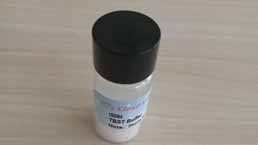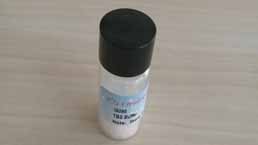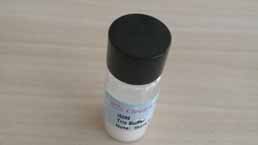Active Calmodulin (CAM)
CALcium MODULated ProteIN
- Product No.APA640Hu01
- Organism SpeciesHomo sapiens (Human) Same name, Different species.
- Buffer Formulation20mM Tris, 150mM NaCl, pH8.0, containing 1mM EDTA, 1mM DTT, 0.01% SKL, 5% Trehalose and Proclin300.
- Traits Freeze-dried powder
- Purity> 90%
- Isoelectric Point4.5
- ApplicationsCell culture; Activity Assays.
- DownloadInstruction Manual
- UOM 10µg50µg 200µg 1mg 5mg
- FOB
US$ 228
US$ 570
US$ 1140
US$ 3420
US$ 8550
For more details, please contact local distributors!
ACTIVITY TEST

Calmodulin (CAM) is the archetype of the family of calcium-modulated (calmodulin) proteins of which nearly 20 members have been found. Its functions include roles in growth and the cell cycle as well as in signal transduction and the synthesis and release of neurotransmitters. Calmodulin mediates the control of a large number of enzymes, ion channels, aquaporins and other proteins through calcium-binding. Among the enzymes to be stimulated by the calmodulin-calcium complex are a number of protein kinases and phosphatases. Besides, Myosin IC (MYO1C) has been identified as an interactor of CAM, thus a binding ELISA assay was conducted to detect the interaction of recombinant human CAM and recombinant human MYO1C. Briefly, CAM were diluted serially in PBS, with 0.01% BSA (pH 7.4). Duplicate samples of 100µL were then transferred to MYO1C-coated microtiter wells and incubated for 2h at 37℃. Wells were washed with PBST and incubated for 1h with anti-CAMpAb, then aspirated and washed 3 times. After incubation with HRP labelled secondary antibody, wells were aspirated and washed 3 times. With the addition of substrate solution, wells were incubated 15-25 minutes at 37℃. Finally, add 50µL stop solution to the wells and read at 450nm immediately. The binding activity of CAM and MYO1C was shown in Figure 1, and this effect was in a dose dependent manner.
Figure. The binding activity of CAM with MYO1C.
USAGE
Reconstitute in 20mM Tris, 150mM NaCl (pH8.0) to a concentration of 0.1-1.0 mg/mL. Do not vortex.
STORAGE
Avoid repeated freeze/thaw cycles. Store at 2-8°C for one month. Aliquot and store at -80°C for 12 months.
STABILITY
The thermal stability is described by the loss rate. The loss rate was determined by accelerated thermal degradation test, that is, incubate the protein at 37°C for 48h, and no obvious degradation and precipitation were observed. The loss rate is less than 5% within the expiration date under appropriate storage condition.
GIVEAWAYS
INCREMENT SERVICES
| Magazine | Citations |
| PLoS One. | Identification of Novel Translational Urinary Biomarkers for Acetaminophen-Induced Acute Liver Injury Using Proteomic Profiling in Mice PubMed: PMC3498140 |
| PLOS ONE | Role of Calmodulin-Calmodulin Kinase II, cAMP/Protein Kinase A and ERK 1/2 on Aeromonas hydrophila-Induced Apoptosis of Head Kidney Macrophages Pubmed:24763432 |
| PLoS One | Calcium and Superoxide-Mediated Pathways Converge to Induce Nitric Oxide-Dependent Apoptosis in Mycobacterium fortuitum-Infected Fish Macrophages Pubmed:26752289 |
| Catalog No. | Related products for research use of Homo sapiens (Human) Organism species | Applications (RESEARCH USE ONLY!) |
| APA640Hu61 | Active Calmodulin (CAM) | Cell culture; Activity Assays. |
| RPA640Hu01 | Recombinant Calmodulin (CAM) | Positive Control; Immunogen; SDS-PAGE; WB. |
| EPA640Hu61 | Eukaryotic Calmodulin (CAM) | Positive Control; Immunogen; SDS-PAGE; WB. |
| APA640Hu01 | Active Calmodulin (CAM) | Cell culture; Activity Assays. |
| PAA640Hu01 | Polyclonal Antibody to Calmodulin (CAM) | IHC |
| SEA640Hu | ELISA Kit for Calmodulin (CAM) | Enzyme-linked immunosorbent assay for Antigen Detection. |
| LMA640Hu | Multiplex Assay Kit for Calmodulin (CAM) ,etc. by FLIA (Flow Luminescence Immunoassay) | FLIA Kit for Antigen Detection. |



















